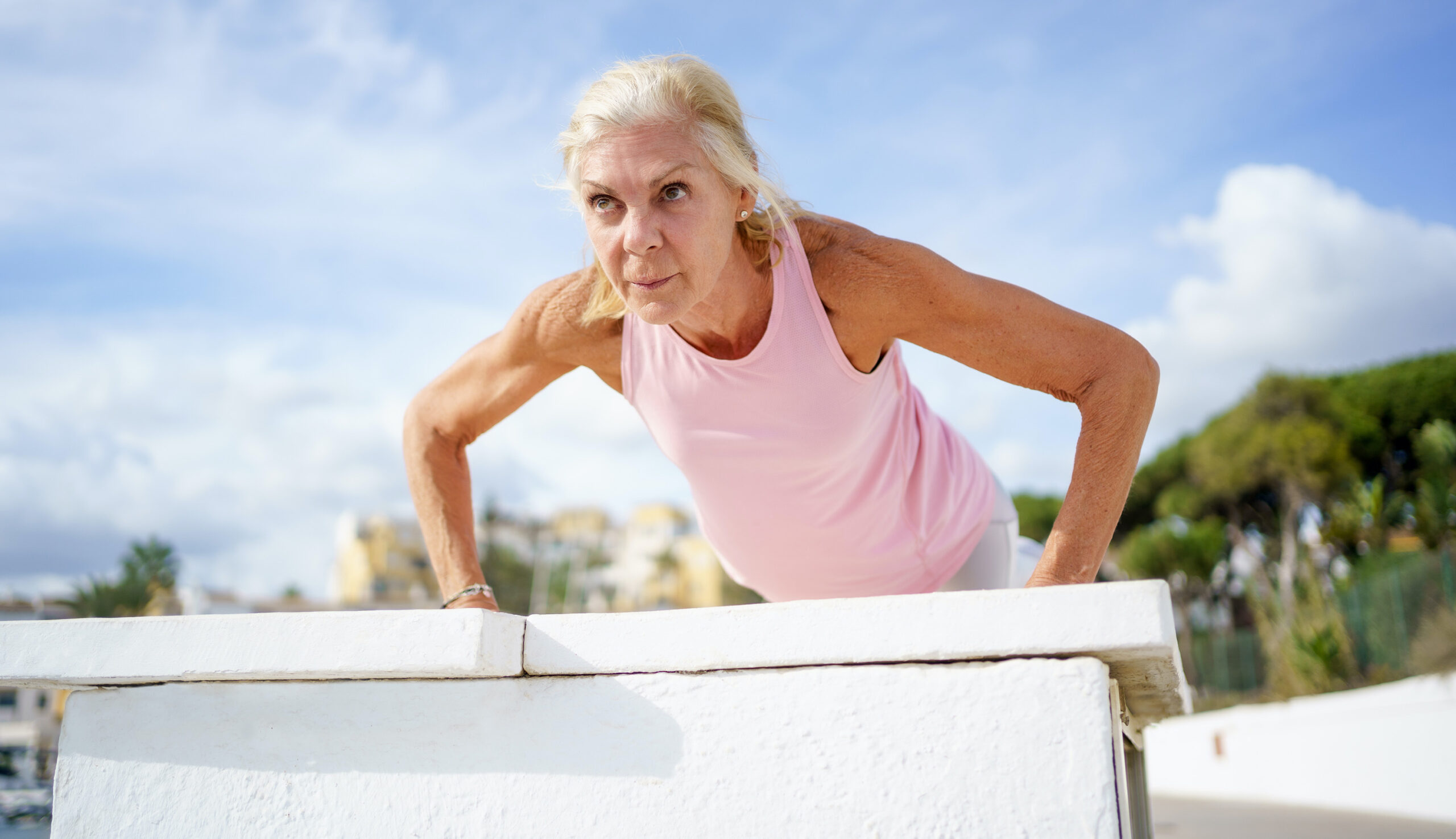As we age, our bones naturally become weaker, and this is especially true for women after menopause. This can lead to a condition called osteoporosis, where bones become brittle and more prone to fractures. For years, doctors have recommended moderate exercise to help keep bones strong. However, recent research suggests that a more intense approach, such as high-resistance training, may be even more effective. One of the most important studies to investigate this topic is the LIFTMOR study, which examined the effects of a specialized exercise program on bone health in women aged 58 and above.
What is High-Intensity Resistance and Impact Training (HiRIT)?
High-intensity resistance and impact training, or HiRIT, involves lifting heavy weights and doing exercises that put pressure on the bones, which helps them become stronger. While this may sound risky for individuals with weaker bones, recent studies, such as the LIFTMOR trial, demonstrate that this type of training can be very safe and beneficial when performed correctly.
What Happened in the LIFTMOR Study?
The LIFTMOR study examined the effects of HiRIT on postmenopausal women with low bone mass. For 8 months, one group of women did high-intensity exercises twice a week, while another group did a gentle, low-intensity exercise routine at home.
The women who underwent high-intensity training (HiRIT) performed 5 sets of 5 repetitions at 85% of their 1-repetition maximum. Exercises included back squats, deadlifts, and overhead presses. These exercises were conducted under the guidance of professionals to ensure their safety. The results were impressive.
In contrast, the control group (CON) followed a low-intensity, home-based exercise routine. They did low-load resistance exercises like lunges, calf raises, and shoulder shrugs, with each exercise performed for 10 to 15 repetitions at less than 60% of their 1RM. They also included walking, balance work, and stretches. The intensity of the resistance exercises started with bodyweight exercises and gradually increased to a maximum of 3 kg hand weights in the final month of the program. The control group’s program focused more on improving balance and mobility, but did not provide as much stimulus for bone growth.
What Did the LIFTMOR Study Find?
- Better Bone Health: The women who did HiRIT showed better bone strength, especially in the femoral neck (a part of the hip bone that’s very important for preventing fractures). While their bone mineral density (BMD) didn’t increase a huge amount, the HiRIT group did show improvements in the part of the bone that contributes the most to strength, which is the cortical bone. This is important because stronger cortical bone can help prevent fractures, especially in the hip.
- Improved Strength and Balance: In addition to improving bone health, HiRIT also helped the women become stronger and more stable. Their muscle strength increased by about 25-35%, which is crucial for preventing falls. The study also showed improvements in balance, mobility, and functional movements like standing up from a chair or walking. These kinds of movements are directly linked to fall risk, so getting stronger and more balanced can help prevent falls and fractures.
- Safe and Effective: One of the big concerns with heavy resistance training for people with osteoporosis is that it might cause fractures. However, the LIFTMOR study found no fractures or major injuries among the participants, even though they were doing intense exercises. This shows that, with proper supervision and technique, high-intensity training can be very safe.
- Quality of Life: Beyond bones and muscles, the participants who did HiRIT also reported improvements in their ability to carry out everyday activities. Being stronger and more stable means they were less likely to feel afraid of falling and were able to do more things on their own, which can greatly improve quality of life.
What Does This Mean for You?
The results of the LIFTMOR study suggest that high-intensity training can be a very effective way to help strengthen bones and muscles, reduce the risk of falls, and improve overall health in women with low bone mass. While the idea of lifting heavy weights might sound intimidating, the study shows that it can be done safely, especially when done under the guidance of a trained professional.
This is a big shift from the traditional advice of doing only light or moderate exercise for bone health. High-intensity training, when done carefully and with proper guidance, can actually be a great option for improving bone strength, reducing the risk of fractures, and increasing overall physical function.
Next Steps
If you’re over 58 and have low bone mass, it’s worth considering high-intensity resistance training as part of your routine. However, it’s very important to work with a professional to ensure you’re doing the exercises correctly and safely. The LIFTMOR study shows that, with proper supervision and gradual progression, heavy resistance training can be a great way to protect your bones and improve your quality of life.
Remember, don’t try to do heavy resistance exercises on your own without professional guidance. You’ll want to start slowly and build up your strength under supervision to avoid injury. But with the right program, high-intensity resistance training could be an exciting and effective way to improve your bone health and physical fitness as you age.



